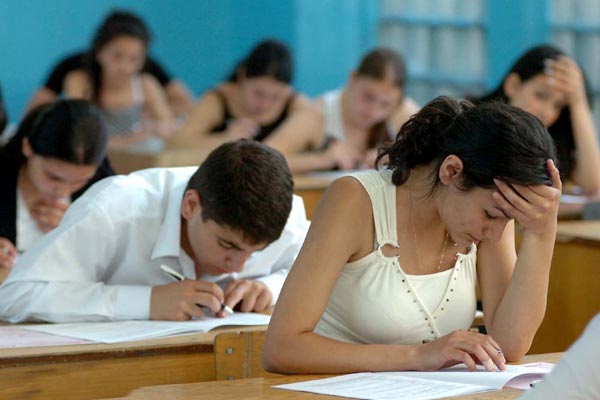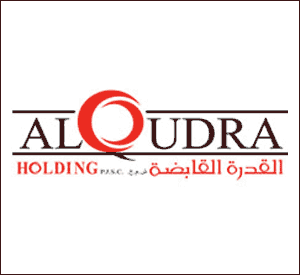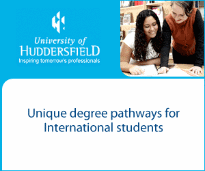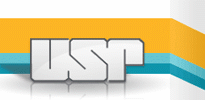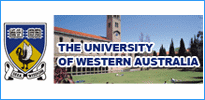Armenia: Armenia Education Profile
2015/09/03
Education System in Armenia
Education has always been prioritized in Armenia - in a country, which has 1600 years old history of literacy. From the very beginning, the school has been the basis of the country's political and cultural survival and the incentive for national evolution.
The current education network has been established during the short existence of the initial Republic in Armenia in (1918 –1920). It has further developed during the years of Soviet Power (1920 – 1990).
Education in Armenia has traditionally been highly rated. Today as well, the majority significant national issue is considered the maintenance and development of education system, insuring its compatibility in the international environment. This can be proved by the laws and decrees issued next declaring independence.
Article 35 of the Republic of Armenia (RA) Constitution adopted in 1995 claims that all RA citizens have the right to education; the secondary education in public schools is free; and each citizen has the right to get higher or other professional education on competitive basis.
On April 14, 1999, the National Assembly adopted RA “Law About Education”, which gave a definite direction to the development of reforming system based on the constitution principles. However, depending on education priorities, it is being adjusted and amended from time to time.
In May 2000, RA Government Decree approved the national standards for general education, according to which actually the education quality in national school is controlled. The “National Plan for Education Development 2001 – 2005 was approved by the parliament in June 2001, the major goal of which is to ensure education progressive development, for it is the decisive factor for statehood enforcement and socio-economic development of the society.
Besides, a series of legal norms and regulations have been adopted, that regulate the legal issues. Nevertheless, adoption of laws during the recent three years cannot smoothly ensure the development of education system. The inadequate quality of enforcement of laws and regulations, the absence of really operating mechanisms for right protection for those involved in education, inclunding the financial, institutional and human resource, and content issues that are seeking for resolution, hinder with the natural development of the education network.
STRUCTURE OF THE EDUCATION SYSTEM
The education network includes:
- · the complex of different level and orientation education programmers that ensure education continuity in compliance to the national standards,
- · the network of different types of education institutions that implement the above programmers,
- · the education management system inclunding all the institutions and enterprises under the umbrella of the managing agency.
The education system in Armenia represents a regular incessant wholeness of institutions and enterprises, the major components of which are; the preschool education for the children at the age of 3-6; general secondary education comprising the primary school (grades 1-3), middle or basic school (grades 4-9): and the high school (grades 10-11); as well the specialized, vocational and higher education; teacher training and retraining institutions. The graduates of basic and high school have the right to continue their education in vocational or higher education institutions. The structure of the education system in the Republic and the links between its institutions.
Besides there are as well non national sector education institutions: schools, colleges and universities, that not only ensure the existence of the market of education services in the education system, but as well bring a substantial contribution into the development of the education system.
PRESCHOOL EDUCATION
The major goals of preschool education are: establishment of basis for the child's physical, moral and mental development; development of communication skills in mother language and ensuring the capability for studying foreign languages based on the obtained skills of the mother language; development of basic counting skills; develop basic behavioral skills; develop knowledge about the surrounding nature and environment; getting to know the elements of own history and culture; develop love and devotion towards the motherland; develop primary operation skills and capabilities; preparation for school studies.
The major role in pre-primary education the government prescribes to the family, and takes up the obligation for ensuring adequate conditions in the family for providing child comprehensive development and care. The national establishes preschool institutions: day care (for children from 2 to 3); kindergartens (for children from 3 to 6); or the combination of the above two.
The preschool education network is currently presented by 663 community based kindergartens and 18 under the umbrella of the ministry, with an enrollment of 44849, out of which 22488 female.
There are as well 15 non-national sector kindergartens.
The number of preschool institutions is reduced by 47% as compared to 1991. The enrollment is as well considerably reduced. In 1991, the number of children attending kindergarten was 143900. In 2002, the in general kindergarten enrollment was 44849. This means that during eleven years the enrollment is reduced by 69 %. That is the result of birth rate reduction, hardships and economic difficulties, large scale of migration, lower quality of preschool services and their accessibility.
12140 educators work in the preschool institutions, out of which 44, 5% are graduates of pedagogical universities.
In 1996, the ownership of the national owned preschool institutions was transferred to the local government – communities, and currently they get funding only from the community budgets. This had a negative impact upon the preschool institution operation, and a lot of of them were simply closed down.
The basic issue in the current preschool institutions is the shortage of funding, which results not only in low fee rates for the educators, but as well makes impossible the replacement of the worn out furniture by new one. A separate issue is the general organization of an operating preschool institution in a rural area, because in a lot of villages they simply do not function due to difficult economic conditions.
Whereas the studies show that, the preschool education has a decisive impact upon the mental development of the child, and upon the formation of a citizen as a full member of the society.
RA Ministry of Education and Science prioritize the development and implementation of a comprehensive programmed for preschool childcare, education and development.
GENERAL EDUCATION
The goal of general education is to create favorable conditions for development of the mental, psychological and physical capabilities of the citizens.
The major challenges for achieving this goal in general education are: to enable the students perceive basic knowledge about nature, society, technology, industry and environment; to create adequate conditions to pursue self-education and self-development of the students in a continuity ensuring education system; to develop an individual equipped with the knowledge of national and international values, an heir of the cultural, moral and psychological values, who can develop a functioning political position.
The secondary (complete) general education is implemented in a threefold secondary 11 years general school inclunding the following levels:
- • primary school (grades 1-3),
- • basic school (grades 4-9),
- • high school (grades 10-11).
There are 1392 national owned general schools operating in RA, out of which 17 are primary schools, 146 are basic schools (8 years) and 1171 are secondary schools. 58 schools part the high schools have the status of a college, 54276 teaching staff works in general schools and 83% of them are women.
The teacher/student ratio currently is 1/10 in the Republic, and the administrative staff/student ratio is 1/20, which is a low ratio against the indicators of developing nations.
72.7% of the teaching staff are graduates of the universities, 17,8% are graduates of pedagogical colleges, 1,3% are with non-complete higher education, 4,7% are graduates of non-pedagogical universities and 3,4% are graduates of other colleges.
The teachers' salaries have decreased 14 times against the indicator of 1991. However it is a bit higher than the average salaries of staff in other national funded institutions. The general education is mainly funded by the national budget.
Besides the national owned schools, 31 non-national schools are currently functioning with an enrollment of 2500 students and 555 teaching staff. The non-national education institutions do not receive allocations from the national budget.
GENERAL EDUCATION REFORMS
The general education presently experiences ongoing reforms, which involves all the aspects of the sphere: the structure, content, management, finance, etc. All available funds – both the budget and out of budget facilities (All Armenian Foundation “Hayastan”, Social Investment Fund of Armenia) and the projects of several international and national organizations are directed to reforms.
Within the general reform implementation the World Bank Credit funded “Education Finance and Management Reform” project is highly prioritized. It was implemented all through 1997–2002 and had two major directions in strategy:
- content aspect – targeted to the development of the general education content development and compliance to the current needs of the society. It includes curriculum revision by disciplines, textbook publishing and distribution, textbook provision to all the students, etc.
- structural aspect – targeted to the decentralization issues of education management and increase in institution autonomy. This includes introduction of new mechanisms in general education finance and management, revision of the organizational and legal status of the institutions, top management performance quality increase, etc.
TEXTBOOK GENERATING ACTIVITIES
The priority issue part the school difficulties during the years next establishing independent statehood in the Republic of Armenia was the issue of school textbooks. All through 70 years during the Soviet Power the textbooks used in the schools of Armenia were those translated from Russian that had become exhausted both physically and morally during the transition period. The issue of textbook provision to students had become additional acute because of drastic decrease in education funding, which resulted in absence of facilities for textbook publication.
The textbook provision and new textbook creation issues were resolved within the framework “Education Finance and Management Reform” credit project 1997-2001.
The following goals and objectives have been set up in 1997 while designing the textbook project:
provide each student of the Republic of Armenia with textbooks,
- · improve the general education curriculum, core textbooks and teachers' manuals so that they meet the contemporary needs, at the same time improving their production quality and reducing their costs for parents,
- · establish a sustainable textbook publishing system based on real request,
- · ensure the further textbook publication cost recovering and establish a self-financing textbook generating sustainable system,
- · eliminate the national monopoly of textbook publication by assisting free market relationships and competition,
- · contribute in developing national school of textbooks.
112 titles of textbooks and 47 titles of teachers' manuals were published and distributed to schools all through 1997 –2002. The currently functioning textbook rental scheme was introduced in 1997, the goal of which is provision of core textbooks approved by the Ministry of Education and Science through renting. In addition, the “Textbook Revolving Fund” (TRF) was created too for collection and supervision of textbook rental fees, as well for organizing further textbook publication based on the school request. By presently in 2001 the required textbooks were published through TRF utilizing the school resources.
The following achievements in textbook publishing and distribution need to be particularly specified:
- · Each and each student in the Republic of Armenia is provided with all the core textbooks designed by the national curriculum. Currently the basic issue of provision of textbooks to each student in Armenia is resolved.
- · The textbook production quality in Armenia experienced an unprecedented evolution. The new textbooks are colorful, the graphic design is interesting and the books have high printing quality. They completely comply with the internationally accepted publishing and printing standards.
- · During the four years of the project textbook generating capacity is built, in the country, which improves year next year, and textbook developing teams are continuously created. Armenian specialists write not only textbooks of Armenian language, literature or history of Armenia , they as well create textbooks on natural and social sciences based on the peculiarities of the Armenian child. Due to the competitive basis of textbook selection the national monopoly on textbook publishing is eliminated. At the same time as during the Soviet year's publisher “Luis” had the monopoly, presently a lot of Armenian publishers are involved in this business, majority of them being newly created.
- · 10% of the children who come from socially vulnerable families are provided with free textbooks.
- · The textbook rental scheme has successfully been operating during the three years of its existence. Textbook revolving fund has accumulated, which is the 85% of the expected level of return. Such a rate of return is incomparable and has no precedence not only part the other former Soviet Union Republics , but as well almost in the whole world. The accumulated funds made possible to provide long-term solution to the textbook financing issue.
GENERAL EDUCATION FINANCE AND MANAGEMENT REFORMS
Since 1998 finance and management reform takes place in the schools of the Republic which as mentioned above, was assisted by the “Education Management and Finance Reform” Credit facilities. The reforms include increase of autonomy institutions, management decentralization, introduction of new mechanisms for management and financing, and other processes.
The new management system implies school management through boards comprising school teaching staff, representatives of school councils, community members, representatives appointed by the top management. The school financing new mechanism implies transition from the per article funding system to the per capita funding system, in lump sum, and to new autonomous manner of accounting and budgeting.
The general education management and finance reform started by a pilot project in 1998 that ended in 2001. The assessment and conclusion of the pilot reform project showed that the major directions of reforms were correctly chosen. It is as well recorded in the “Government program of the Development of Education 2001 – 2005” according which it is envisaged that by the year 2005 all the general education institutions in the Republic should transfer to this new way of financing and management and 250 –300 schools will be included in the process each year.
700 schools in the republic have currently transferred to the new management system. School directors, board members and the school accountants were trained to ensure the process of transfer to the self-management and increase of school autonomy. For this purpose in 1998 about 30 trainers were selected, who conducted further training during the following. International consultants have trained the trainers' group and assisted in developing the training materials – modules. The concerning materials consist of three sections: legislation sector, director as a school manager and director as a leader.
700 school directors, 4000 board members and 250 school accountants are by presently trained. The assessment carried out during the training courses shows that in almost all the schools the majority active members in school boards are the parents and the teachers. The boards chaired by parents or teachers are significantly additional efficient in acting. Beside the mentioned training course, the director, board members and accountant participate in a very significant two-day training course, where they discuss and learn their rights and responsibilities. Despite the fact that for full decentralization a considerably additional time is needed, it should be mentioned that since 1998 the board activities have become additional efficient however.
In the framework of the Credit project Education Management Data System (EMIS) was introduced through a united computerized data system. The detailed description for EMIS goals, objectives and the process, inclunding the major statistic data for the general education system for the school year 2002-2003 and its analysis;.
The works for creation EMIS started in January 1999. The established network includes the relevant departments of the Ministry of Education and Science, the Marz Education Departments and the Center for Education Projects, where the EMIS center is placed. A reporting form called “About General Education Institutions Activity” is developed which collects complete data about the activities of each schools in Armenia . An EMIS database is created which ensures the date entries, maintenance, processing, utilization and analysis by years. The Republic level database is unified and analyzed in the EMIS center, and on the marz level it is done in Marz centers.
The “School Development Programmed” (SIP) implemented within the framework of “Education Financing and Management Reform” project played an significant role in establishing school financial independence, generating out of budget funds for the school, school internal management development, community members and parent involvement in school management issues. SIP role is as well great in promoting out of school activities.
SIP has executed the school micro project financing on competitive basis.
774 schools of the Republic participated in the competition during the 1998 - 2000. 530 schools were selected, out of which 312 were granted different size funding (2000-10000 USD) and implemented various micro projects – agricultural, aesthetic, sport, computer skills and extension projects for different disciplines, etc.
The publication of series of periodic magazines and newsletters started again beginning from 1998 (“Naturalist”, “Mathematics at School”, “The Russian Language in Armenia ”, “Civic Education in School”, etc.).
Additional than 50 international and local NGOs (UNICEF, UNESCO, UNDP, USAID, TACIS, NRC, CRS, etc.) have considerably contributed in the area of introducing new disciplines, training teachers, introducing new teaching methods and techniques.
SPECIAL GENERAL EDUCATION
Orphanages and boarding institutions that implement general and appropriate education programmers are created to ensure the education of children deprived of family care and children with appropriate educational needs.
Instantly 54 public boarding institutions are operating: part them 41 are for children with appropriate education needs; 5 are for children deprived of family care or for children from socially vulnerable families; and 8 are for assisting the gifted children.
The total enrollment of the boarding institutions is 10820 children, 52% of which take a full board.
The number of boarding institutions has increased by 14, 8% as compared with the 1991 data, and the enrollment has increased by 21, 4%. The enrollment in these institutions increases year by year, mainly because additional children come from socially vulnerable families.
There are not any private boarding institutions.
Additional efforts are made in the recent years to educate children with physical and mental disabilities in general schools, which will integrate them in the society. This as well results from the general humanistic tendency in education and the society all over the world. It is envisaged to transfer the appropriate education institutions to the new management and finance system as well.
The Ministry of Education and Science board decree approved the Reform Programmed of the “RA Education System Boarding Institutions” on June 13, 2003. According to the above-mentioned document the appropriate education system reforms have the following directions:
- • institutional adjustment of the boarding institution network,
- • development of admission system to the boarding institutions,
- • decentralization of the services provided within the boarding institutions,
- • introduction of new management and financing system in the boarding institutions,
- • child care and education quality development in the boarding institutions,
The mentioned aspects are interrelated and complimentary. Efficient implementation of these aspects is possible only by gradual and complex implementation of required activities.
OUT OF SCHOOL EDUCATION
The aim of out of school education is to create conditions for developing the students' interest, ensure their psychological, aesthetic, physical development and provide environmental and practical knowledge by organizing their leisure time.
The out of school education system includes creative and aesthetic youth centers, musical schools and art schools, clubs and tourist camps for young naturalists, technologists, environmentalists and sports schools and resort camps, etc.
Currently there are 163 public and community out of school institutions with an enrollment of 63700 children. As compared to the level of 1991 the number of out of school institutions have reduced by 27% and enrollment has reduced by 58, 9%.
There is no comprehensive national policy in this area of education next the collapse of the Soviet Union . Current teenagers' organizations function by the sponsorship and leadership of different non-governmental institutions (church, parties, etc.).
Regulating and supervision of the out of school institutions activities are vital issues for organizing profound leisure time for the child.
PROFESSIONAL EDUCATION
The professional education programmers target to the qualified specialist training, development of corresponding capacity and skills, enhancement of knowledge and development of qualification through the continuity of general education and professional education levels.
Before 1990-1991 the professional education was free, however since 1992 the institutions providing professional education implement paid educational programs along with the national order, where educational institutions define the size of tuition fee independently. RA Government defines the number of free education places for each year, based on the request of each category of specialists and the budget allocations for professional education. RA Ministry of Education and Science and line Ministries jointly define the number of paid education places for each year, based on the capacity of definite institution, availability of facilities, teaching staff, educational materials and literature, etc.
The admission into the professional educational institutions is performed through competition - students pass entrance examinations.
The major professional education programmers implemented in Armenia are:
- 1. preliminary professional education (or preliminary vocational education),
- 2. middle level professional vocational education,
- 3. higher professional education,
- 4. post graduate education.
PRELIMINARY PROFESSIONAL (OR VOCATIONAL) EDUCATION
The aim of preliminary professional education (or vocational education) is to train the students for jobs demanding primary professional qualification, on the basis of general education.
The technical professional education is provided on the basis of basic or secondary general education in technical colleges. The education period is from 1 or 3 year accordingly.
Currently the total enrollment of 12 colleges is 750 students.
The primary professional education network has undergone considerable changes since 1991 in terms of specialties as well, which is closely linked with the economic changes in the country. The professions related to the spheres of services, trade, and food industry is presently weighted in the inventory of professions, while the number of students in the industry or construction sector has drastically decreased. There are no non-national sector technical colleges.
MIDDLE LEVEL PROFESSIONAL (OR VOCATIONAL) EDUCATION
The aim of middle level professional education is to train the students with middle professional qualification, on the basis of general secondary education, as well to provide deeper and expanded professional knowledge.
Middle professional education is performed in middle professional education institutions: college and vocational schools.
Education in the middle professional education institutions is implemented on the basis of secondary general education in both ways – stationary and distant education. The length of education depending on the level of basic education of the students and the chosen profession is from 1 year and 10 months up to 4 years and 10 months. There are 130 professions taught in these institutions. The graduates are granted the qualification of junior specialist.
Currently 80 national middle professional education institutions are functioning (together with 1 branch) with an enrollment of 29500 students, and private ones. The number of national middle professional education institutions has increased by 15% and the number of students has reduced by 27, 3% against the level in 1991.
Nearly 4300 teaching staff is involved in middle professional education institutions, 70% of which are women.
4% of the total education budget is allocated for the middle professional education institutions.
Due to the reforms that took place in middle professional education a new inventory of professions is approved which includes 257 professions grouped in 28 professional groups; a new regulation was adopted for introducing paid education; RA Ministry of Education and Science approved the national standards for middle professional education, inclunding the model charter for the middle professional education institutions.
Universities in Armenia
This list includes universities, colleges, vocational schools, and other higher education institutions.
- Armenia News
-
- AFGHANISTAN: The newly created Eurasian Economic Union (EEU) has shortly got the momentum
- ARMENIA: 2015 Euro-Asia Economic Forum in Xi'an,
- ARMENIA: EU-funded project: round table on ethics and disciplinary issues in Georgian Bar Association
- ALBANIA: TAP starts construction of access roads, bridges in Albania
- AFGHANISTAN: Revised IMF forecasts signal gloom on global economic outlook
- AFGHANISTAN: Oxfam Study Finds Richest 1% Is Likely to Control Half of Global Wealth by 2016
- Trending Articles
-
- FRANCE: Cavendish doing it for Africa
- CONGO BRAZZAVILLE: Congo: Total abandons oil field citing decrease in global oil prices
- SOUTH AFRICA: South Africa’s Biggest Labor Group to Balance Pay With Job Security
- EUROPEAN UNION: EU meets without Britain for first time since Brexit vote
- ISRAEL: Israeli PM to embark on historic Africa visit boosting diplomatic, economic ties
- NIGERIA: Lagos hosts 2016 Africa fashion week Nigeria



